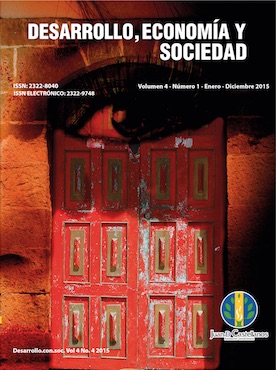Keywords:
Education, Law, Detention, Human Rights, Resocialization, DignityAbstract
This research aims to establish the importance of the human right of access to education as a guideline of rehabilitation within the execution of the sentence of the female prison population of Colombia. In the context in which this research was established converges various social, economic, educational and cultural factors that affect the enjoyment of the right to freedom, an analysis is done from the legal field of human rights (positivization) and recognition of the recluse women as subjects of rights, aimed at highlighting the importance of a proper process of rehabilitation through access to education redignifique the prison population in the enjoyment of their human rights, because the loss of freedom limits the enjoyment of social and civil rights, associated with the chaotic crisis of overcrowding and inner prison violence. Art studies on access to the right to education in prison context as resocializing pattern of Francisco Jose Scarfó (2002), Abraham Magendzo (2002), Katarina Tomasevski (2009), Marcela Lagarde (2005), Paulo Freire (1965), also cited the Universal Declaration of HR, international agreements, national jurisprudence and various public policies on the enjoyment of the human right to education in state prison finally cited conclusions relevant to the research topic is set.
Downloads
References
Azóala, E., y Yamacán, C. (2004). Las mujeres olvidadas. Bogotá.
Freire, P. (1965). Pedagogía del Oprimido. Buenos Aires: Siglo XXI.
Instituto Nacional Penitenciario Colombiano y Carcelario. (2015). Informe estadístico del INPEC, Junio de 2015. Recuperado de http://www.inpec.gov.co/portal/page/portal/Inpec/Institucion/Estad%EDsticas/Informes%2 0y%20Boleti nes%20Estad%EDsticos.
Lagarde y de Los Ríos, M. (2005). Los cautiverios de las mujeres: madres, esposas, monjas, putas, presas y locas. México: Universidad Nacional Autónoma de México.
Magendzo, A. (2002). Pedagogía Crítica y educación en Derechos Humanos. Recuperado de http://educacioncritica.fong dcam.org/files/2011/03/PEDAGOGIA-CRITICA-YEDUCACION-EN-DERECHOS-
HVAGOSTO-02.pdf
Muñoz, V. (2004-2010). Relator Especial de la ONU sobre el derecho a la educación. Tomado de http://www2.uned.es/dpto-derecho-politico/Educacion_Derechos_NU.pdf
De Olmo, R. (1998). Criminalidad y criminalización de la mujer en la región andina. Caracas: Nueva Sociedad.
Régimen Penitenciario de Colombia ley 65 de 1993.
Scarfó, F- (2002). Artículo “El derecho a la educación en las cárceles como garantía de la educación en derechos humanos”. Publicado en revista IIDH. Argentina.
Tomasevski, K. (2003). Contenido y vigencia del derecho a la educación. Cuadernos Pedagógicos, IIDH, San José de Costa Rica.





